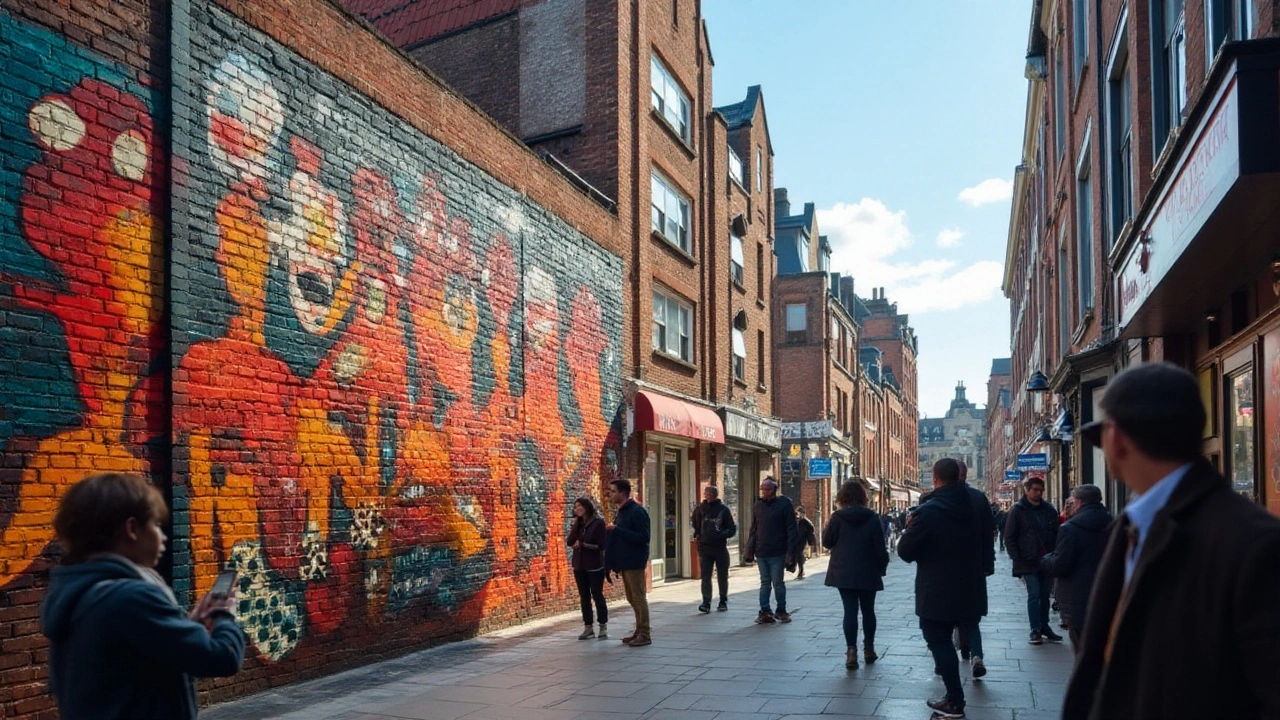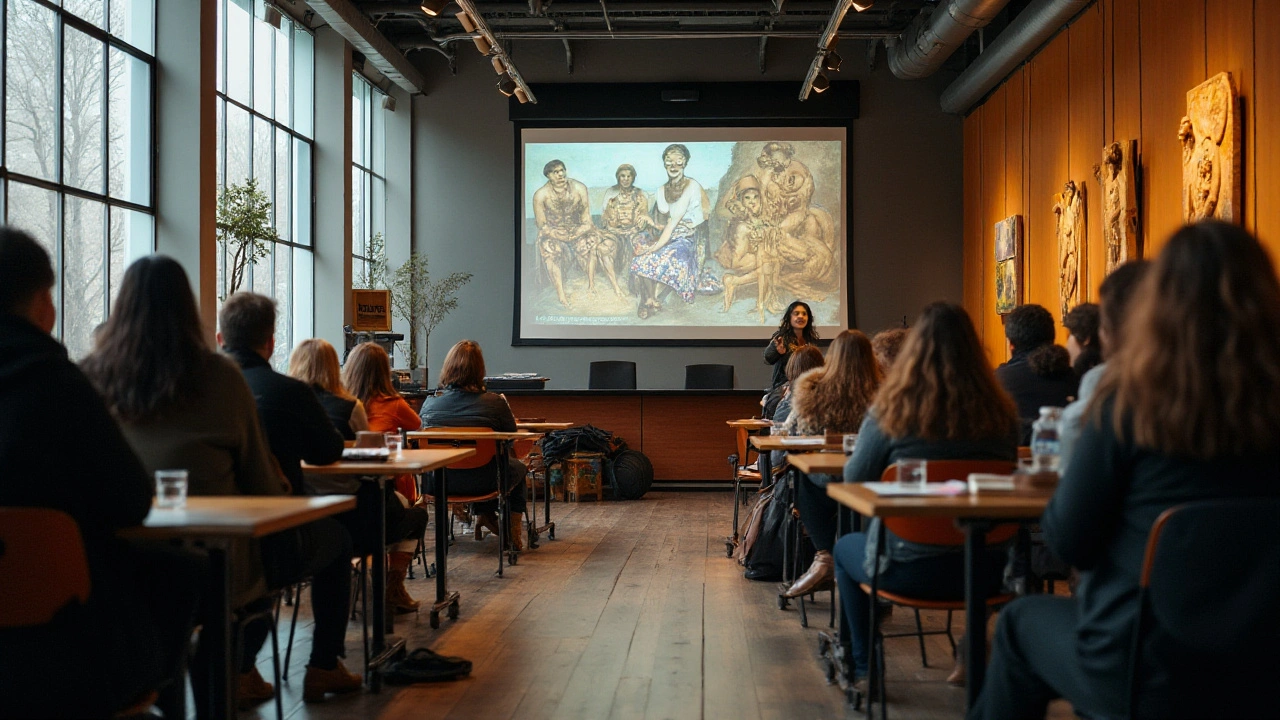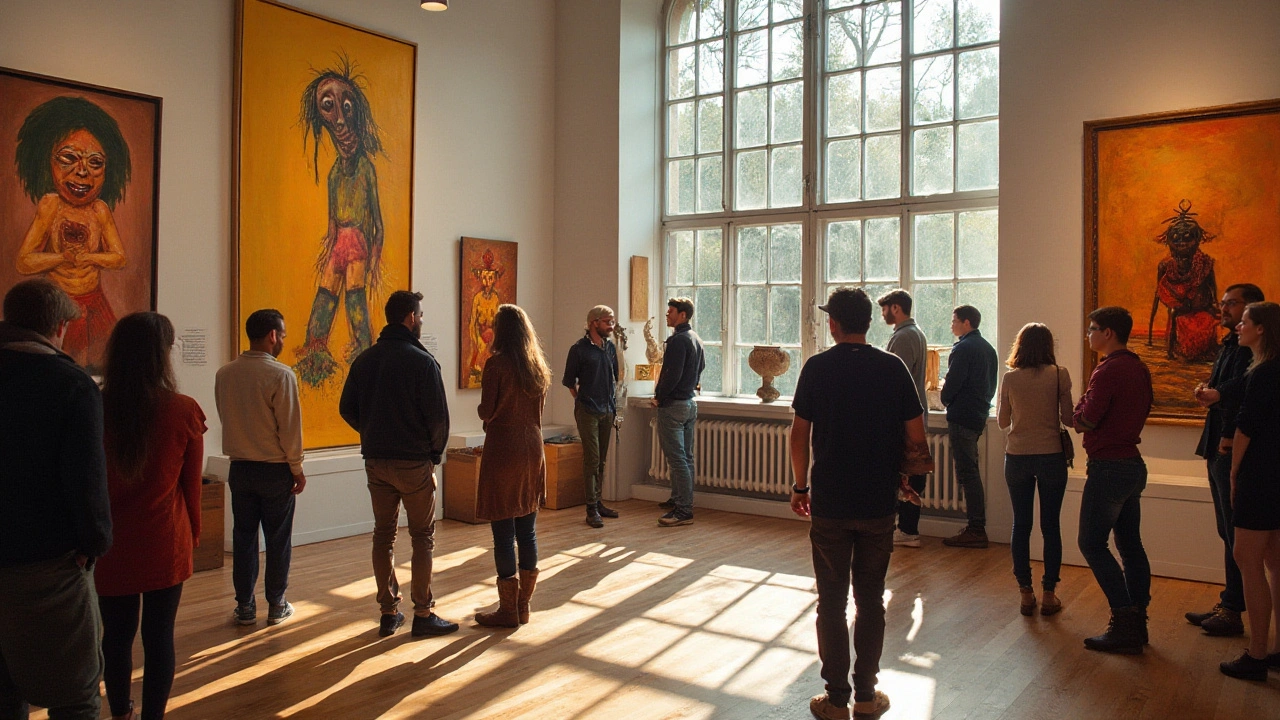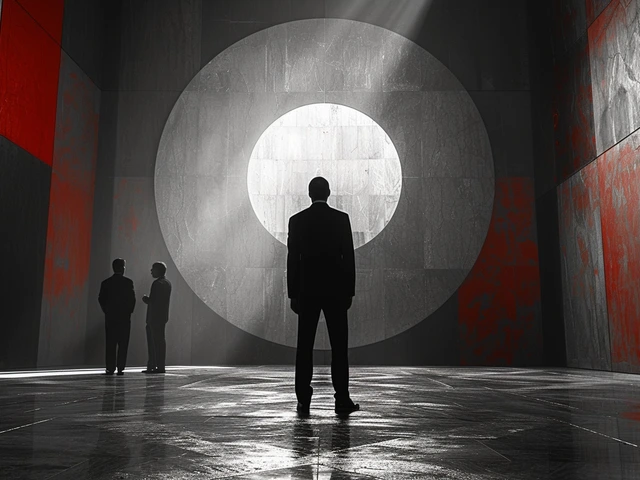Primitivism is an art movement that has always dared to be different. At its core, Primitivism embraces simplicity, raw expression, and a connection to early, often tribal, art forms. It’s an approach that seeks to strip away the complexities of modern life and return to a more fundamental and honest form of creation.
Originating in the late 19th and early 20th centuries, Primitivism was a response to the rapidly changing world, filled with industrial advancements and technological innovations. Artists who felt overwhelmed by the speed of modernity began to look for inspiration in the age-old traditions and simpler lifestyles of indigenous cultures. This longing for a return to basics gave birth to a movement filled with vibrant colors, bold lines, and unrefined forms.
Origins of Primitivism
Primitivism, as an art movement, traces its beginnings back to the late 19th and early 20th centuries. It emerged as a reaction to the rapid technological advancements and industrialization that were transforming societies at a dizzying pace. Artists found themselves yearning for a return to simpler, more genuine forms of expression. They turned their gaze towards the art of indigenous cultures, whose creations seemed to convey a raw, unfiltered essence that modernity often lacked.
One of the defining moments in the development of Primitivism was the increasing exposure to non-Western art due to colonial expeditions. Museums began showcasing African masks and Oceanic sculptures, and these pieces captivated the imagination of many artists. The exotic allure and perceived purity of these objects stood in stark contrast to the industrial world they inhabited. Artists like Paul Gauguin, who ventured to Tahiti, sought to immerse themselves in these so-called 'untouched' cultures, hoping to capture some of the primal spirit he believed was lost in Western society.
A pivotal moment arrived when Pablo Picasso encountered African art. Influenced by the masks and sculptures he saw at the Musée d'Ethnographie du Trocadéro in Paris, Picasso created his groundbreaking work, Les Demoiselles d'Avignon. This painting broke with conventional perspectives and showcased a raw, almost jagged fragmentation of forms that echoed the African inspirations. In Picasso's own words, "Art is the lie that enables us to realize the truth," illustrating how he saw Primitivism as a path to deeper, more universal truths.
It wasn't just Western artists who were drawn to Primitivism. The movement highlighted a broader cultural trend of romanticizing the 'noble savage,' a concept rooted in the idea that non-industrialized peoples lived in a state of purity and simplicity. This myth was both a source of inspiration and controversy. While Primitivism sought to honor these cultures, it also ran the risk of reducing them to mere curiosities, stripping away the rich complexities of their traditions.
The influence of Primitivism extended beyond the canvas. In literature, works like Joseph Conrad's Heart of Darkness explored similar themes of civilization versus savagery, drawing from the same well of fascination with the primal. In music, composers such as Igor Stravinsky with his piece The Rite of Spring sought to evoke the raw, untamed spirit of early human cultures. Stravinsky's work, characterized by its complex rhythms and dissonant harmonies, was revolutionary, much like the visual art of the same movement.
Today, Primitivism continues to provoke discussion and debate. It serves as a testament to the enduring human desire to reconnect with a more fundamental way of being. For artists and art lovers, the movement is a reminder of the power of simplicity and the beauty that can be found in raw, unrefined expression. As we move through the complexities of modern life, the lessons of Primitivism remind us to seek out the authentic and to value the basic truths that art can reveal.
Pablo Picasso once said, "Every child is an artist. The problem is how to remain an artist once we grow up." This quote highlights the Primitivist belief in maintaining a childlike honesty in artistic expression.
The origins of Primitivism offer a fascinating glimpse into art history's response to the changing world. By looking back, these artists found a way to move forward, creating works that still resonate with their bold and unique vision.

Key Characteristics
At the heart of Primitivism lies a desire to simplify and return to the raw essence of art. One of the most defining features is the use of bold, striking colors. These are often primary colors that grab the viewer’s attention immediately and evoke strong emotions. The brushstrokes are pronounced and visible, creating a sense of urgency and directness.
The subjects in Primitivist works are typically rendered in a way that might seem childlike or naive. This is an intentional choice by the artist to strip them of unnecessary detail and bring forward a pure, unembellished form. The human figures, animals, and landscapes in these paintings are presented with exaggerated proportions and simplified shapes, which can sometimes verge on the abstract.
Another key characteristic of this art movement is its incorporation of tribal or indigenous motifs. African, Oceanic, and Native American art have all significantly influenced Primitivist artists. They drew inspiration from the spiritual and ceremonial aspects of these cultures, embedding symbolic meanings into their own works. Masks, totems, and ritualistic patterns often find their place in Primitivist art.
“Art must reach back to the primitive purity of the means, the innocent power of expression, and the fresh, unspoiled look of the world,” wrote Russian artist and influential Primitivist, Natalia Goncharova.
Texture also plays a crucial role in Primitivism. Artists frequently use rough, unpolished surfaces. They may mix media and experiment with unconventional materials to add depth and dimension. The result is a tactile quality that invites the viewer to engage with the work on a sensory level.
Primitivist works are often imbued with a sense of emotion and spontaneity. The art is less about realistic representation and more about evoking a gut reaction. The simplicity of the forms and the intensity of the colors help to communicate powerful feelings and ideas directly to the audience. This makes Primitivism a very accessible form of art that speaks to people on an instinctual level.

Influential Artists
Primitivism has been shaped by many bold and unique artists who dared to break away from the conventions of their time. One of the foremost figures in this movement is Paul Gauguin. Dissatisfied with the confines of Parisian society, Gauguin journeyed to Tahiti, where he immersed himself in the island's culture. His works from this period, such as 'Where Do We Come From? What Are We? Where Are We Going?' showcase the vibrant colors and simplified forms characteristic of Primitivism.
Another titan of the movement is Pablo Picasso. While widely known for Cubism, Picasso's exploration of African masks and tribal artifacts in the early 20th century deeply influenced his work. Pieces like 'Les Demoiselles d'Avignon' reflect this primal energy and raw aesthetic. It's said that Picasso once remarked, "Art is the lie that enables us to realize the truth," highlighting his belief in the deeper truths of primal art forms.
Henri Rousseau, often dubbed 'Le Douanier' due to his day job as a toll collector, also left an indelible mark on Primitivism. Though initially mocked by contemporaries, Rousseau's dream-like landscapes and exotic scenes later gained appreciation for their child-like simplicity and directness. His work, 'The Sleeping Gypsy,' with its fantastical elements, embodies the primal essence that many primitivists sought.
Moreover, the German Expressionist group Die Brücke (The Bridge) should not be overlooked. Artists like Ernst Ludwig Kirchner drew heavily on African and Oceanic art to develop a style marked by bold colors and stark contrasts. Their 'bridge' was an attempt to connect the old, primal artistry with the new modern expression.
One can also mention the influence of Russian avant-garde artist Natalia Goncharova. Her works often merged the styles of Russian folk art with the aesthetics of Primitivism, creating a unique blend of old-world motifs and modernist abstraction. Her painting, 'The Forest,' reflects this intriguing dichotomy.
"Primitivism allows us to see the world through unfiltered eyes, stripping away the pretensions of civilization." - Art historian Robert GoldwaterThis quote from Goldwater captures the spirit of artists who embraced Primitivism. It wasn't just about the visual elements; it was about capturing the raw, unadulterated essence of life.
In summary, influential artists of the Primitivist movement were not merely creators of images but pioneers who sought a profound connection to the raw, fundamental human experience. By embracing unrefined forms and vibrant palettes, they brought a unique perspective that continues to resonate in contemporary art.

Impact on Contemporary Art
The Primitivism movement has left an indelible mark on contemporary art, influencing countless artists and shaping diverse art forms in ways that are both subtle and profound. When we look at the evolution of modern artistic practices, the echoes of Primitivism's bold simplicity and raw expression are undeniable.
This movement pushed artists to strip back layers of sophistication that had dominated art for centuries, encouraging a return to more fundamental and unrefined aesthetics. By focusing on primal human themes, simplified shapes, and vibrant, natural colors, contemporary artists found new ways to connect their creations with viewers on a deeper emotional level.
Renowned artists like Pablo Picasso and Henri Matisse are prime examples of the lasting influence of Primitivism. Picasso's fascination with African masks and Iberian sculpture inspired some of his most famous works, embedding a primal aesthetic into the fabric of modern art. Similarly, Matisse's use of flat perspectives and strong color contrasts mirror the simplified beauty championed by Primitivism.
Primitivism's impact isn't limited to painting alone. In the realm of sculpture, artists such as Constantin Brâncuși embraced the movement's principles to create works that are celebrated for their pure forms and spiritual resonance. His famous sculptures like 'Bird in Space' exhibit the profound simplicity and essence of Primitivist influence.
Moreover, Primitivism has inspired contemporary abstract and street art. The raw and emotive qualities of Primitivist art resonate within the works of street artists who often seek to convey raw social commentaries through simplified, yet powerful imagery. This connection to primal expression can be seen in the bold lines and stark motifs of their work.
One cannot overlook the rise of digital and mixed-media art which often draws inspiration from Primitivist aesthetics. The digital age has opened new horizons for artists to experiment with texture, form, and color in ways that echo the raw and unpretentious qualities of Primitivism while utilizing modern technology. This melding of old and new showcases the enduring relevance of Primitivist ideals.
Additionally, many contemporary art movements, including neo-expressionism and outsider art, give a nod to Primitivism for its commitment to raw emotional honesty and unrefined aesthetics. These movements highlight how artists continue to seek authenticity and primal connection through their works, suggesting that the spirit of Primitivism is very much alive.
Interestingly, a study conducted by the Smithsonian American Art Museum showed that exhibitions featuring Primitivist influences tend to draw larger crowds, highlighting the public's enduring fascination with this bold and unique art movement. This data underscores how deeply ingrained Primitivist concepts are in the collective artistic consciousness.
As Picasso once said, “Art is the elimination of the unnecessary.” This line beautifully encapsulates the ethos of Primitivism, a movement that dares to be different by stripping art to its most essential and powerful forms.
The impact of Primitivism on contemporary art is profound and unshakeable. Its influence continues to ripple across various art forms, inspiring new generations of artists to explore simplicity, embrace raw emotion, and create works that resonate deeply with our shared humanity.




